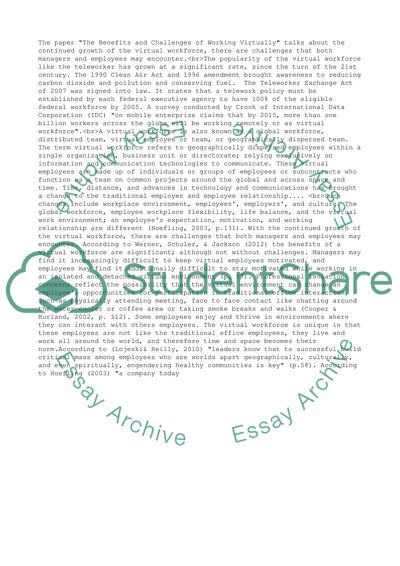Cite this document
(“The Benefits and Challenges of Working Virtually Essay”, n.d.)
The Benefits and Challenges of Working Virtually Essay. Retrieved from https://studentshare.org/management/1399517-the-benefits-and-challenges-of-working-virtually
The Benefits and Challenges of Working Virtually Essay. Retrieved from https://studentshare.org/management/1399517-the-benefits-and-challenges-of-working-virtually
(The Benefits and Challenges of Working Virtually Essay)
The Benefits and Challenges of Working Virtually Essay. https://studentshare.org/management/1399517-the-benefits-and-challenges-of-working-virtually.
The Benefits and Challenges of Working Virtually Essay. https://studentshare.org/management/1399517-the-benefits-and-challenges-of-working-virtually.
“The Benefits and Challenges of Working Virtually Essay”, n.d. https://studentshare.org/management/1399517-the-benefits-and-challenges-of-working-virtually.


